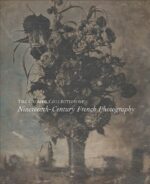Le développement de la photographie en tant que nouvelle forme d’art et de technologie a coïncidé avec de profonds changements dans la façon dont la Chine a engagé avec le monde au XIXe siècle. Le médium a évolué en réponse à la guerre, au commerce, aux voyages et au désir de connaître un endroit inconnu. Power and Perspective offre un riche compte rendu des échanges entre photographes, artistes, mécènes et sujets dans les villes portuaires de traités qui reliaient la Chine et l’Occident. Puisant principalement dans la collection historique et largement inédite de photographies du Peabody Essex Museum, ce volume généreusement illustré examine les confrontations et collaborations qui ont façonné l’adoption et la pratique de la photographie en Chine. Proposant une réévaluation originale de l’héritage colonial du médium, Power and Perspective aborde les représentations photographiques de la hiérarchie raciale et son enchevêtrement dans les histoires de l’impérialisme européen au XIXe siècle en Chine.
Photography’s development as a new form of art and technology coincided with profound changes in the way China engaged with the world in the nineteenth century. The medium evolved in response to war, trade, travel, and a desire for knowledge about an unfamiliar place. Power and Perspective provides a rich account of the exchanges among photographers, artists, patrons, and subjects in the treaty port cities that connected China and the West. Drawing primarily from the Peabody Essex Museum’s historic and largely unpublished collection of photographs, this generously illustrated volume examines the confrontations and collaborations that shaped the adoption and practice of photography in China. Offering an original reassessment of the colonial legacy of the medium, Power and Perspective addresses photography’s representations of racial hierarchy and its entanglement with histories of European imperialism in nineteenth-century China.


















